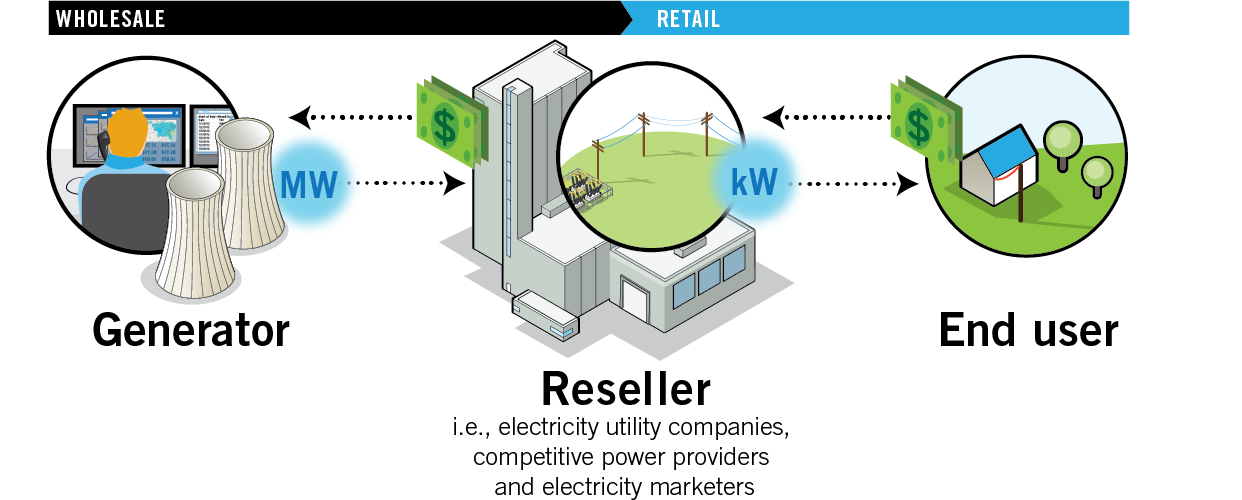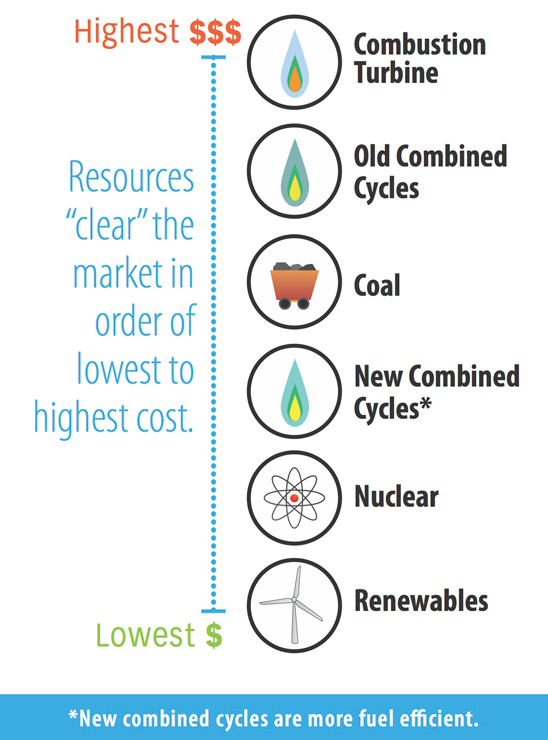Market for Electricity
Electricity is bought, sold and traded in wholesale and retail markets, which operate similarly to wholesale and retail markets for other products. The purchase and sale of electricity to resellers (entities that purchase goods or services with the intention to resell them to someone else) is done in the wholesale market, while the purchase and sale of electricity to consumers is done in the retail market.
Organized wholesale electricity markets were created to address ever-increasing electricity prices and to encourage innovation through free-enterprise competition.
PJM’s markets have done just that. Competition has helped to create a less expensive, more reliable and cleaner grid that can offer market-based solutions to changes in public policy and the industry.
Understanding the Differences Between PJM's Markets (PDF)

Wholesale Market
The wholesale market refers to the buying and selling of power between the generators and resellers. Resellers include electricity utility companies, competitive power providers and electricity marketers. For most regions within the United States, the operation of and transactions in the wholesale market are regulated by the Federal Energy Regulatory Commission.
The wholesale market begins with generators, which, after securing the necessary approval, connect to the grid and generate electricity. The electricity produced by generators is bought by an entity that will often, in turn, resell that power to meet end-user demand. These resale entities will generally buy electricity through markets or through contracts between individual buyers or sellers. In some cases, utilities may own generation and sell directly to end-use customers.
 The price for wholesale electricity can be predetermined by a buyer and seller through a bilateral contract (a contract in which a mutual agreement has been made between the parties) or it can be set by organized wholesale markets. The clearing price for electricity in these wholesale markets is determined by an auction in which generation resources offer in a price at which they can supply a specific number of megawatt-hours of power. You can view real-time price information on the Markets & Operations homepage.
The price for wholesale electricity can be predetermined by a buyer and seller through a bilateral contract (a contract in which a mutual agreement has been made between the parties) or it can be set by organized wholesale markets. The clearing price for electricity in these wholesale markets is determined by an auction in which generation resources offer in a price at which they can supply a specific number of megawatt-hours of power. You can view real-time price information on the Markets & Operations homepage.
If a resource submits a successful bid and will therefore be contributing its generation to meet demand, it is said to “clear” the market. The cheapest resource will “clear” the market first, followed by the next cheapest option and so forth until demand is met. When supply matches demand, the market is “cleared,” and the price of the last resource to offer in (plus other market operation charges) becomes the wholesale price of power.
Retail Market
After electricity is bought by resell or “supply” entities in the wholesale market, it can be sold to end-users in the retail market. As an illustration, an end user in a home may pay a local electric utility company for the electricity that it uses each month. The purchase and sale of electricity in this instance is happening in the retail market.
Many consumers have options for purchasing electricity. They can choose from their local utility or a number of competitive retailers to find the service that best fits their needs. These resellers (retail electricity providers) purchase electricity though wholesale electricity markets before they resell it to consumers (and, if they are a regulated utility, resell electricity at retail rates set by state regulators).
PJM in Wholesale Markets
As a regional transmission organization, PJM operates a wholesale electricity market that spans all or part of Delaware, Illinois, Kentucky, Maryland, Michigan, New Jersey, North Carolina, Ohio, Pennsylvania, Tennessee, Virginia, West Virginia and the District of Columbia. Acting as a neutral, independent party, PJM operates electricity “spot markets” in which generators sell and utilities or electricity providers buy energy for immediate delivery. These energy markets operate every day, and participants in the market establish a price for electricity by matching supply (what generators want to sell) and demand (what utilities and customers want to buy).